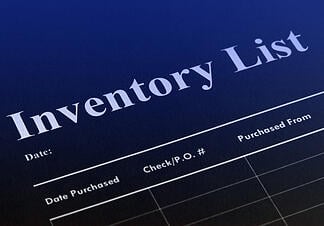 Selecting an inventory management system for your company is a significant decision. It is a sizable investment, which your company will, hopefully, be using for a long time. Therefore, it is important to choose a system that will meet your company’s needs for years to come. Even though you might not have enough capital available now to purchase a program that has lots of bells and whistles, you should only consider inventory management software that has all the essentials. Here are six core things to look for in your next inventory management software.
Selecting an inventory management system for your company is a significant decision. It is a sizable investment, which your company will, hopefully, be using for a long time. Therefore, it is important to choose a system that will meet your company’s needs for years to come. Even though you might not have enough capital available now to purchase a program that has lots of bells and whistles, you should only consider inventory management software that has all the essentials. Here are six core things to look for in your next inventory management software.
Designed for Your Industry
Each industry has slightly different needs, and software providers have developed industry-specific inventory management programs. As a manufacturer, for example, you do not need to worry about expiration dates as much as a baking company does. Instead, you might be more concerned with the supply of raw materials. Inventory management solutions that cater to the manufacturing industry will take this into account and provide the tools you need. Begin your search by limiting it to solutions designed with your industry, manufacturing, in mind.
Compatible with Your Hardware
Before purchasing any software, be sure it is compatible with your existing hardware. With most computer programs, hardware compatibility is rarely an issue. Some inventory management programs take up a lot of virtual resources, though, and they require powerful computers to run on. Avoid costly hardware upgrades by choosing a program that your current system can run.
Look at the optimal hardware requirements for the inventory management system you are considering, because this is what you will need to run the program smoothly. If you only have the minimum system requirements, the application will likely lag. Even if it does run adequately on the minimum system requirements, these may not be sufficient to run the inventory system after its next update. At a minimum, you should have the optimal hardware requirements.
Importing and Exporting Data
Your inventory management system should easily import data from and export it to other programs your company uses. Check whether it is compatible with your ordering system and accounting software, and also make sure you can import data from your current inventory management system. If you are upgrading from Excel to an inventory management system, look for one that accepts .csv or .xlsx files. If you are transferring data from another program, look up what file format your current system uses and find a new platform that can read those files.
An Intuitive Interface
Few small businesses have much money or time for training employees on new software, so it is important to select a system that is intuitive. You may have to pay slightly more for a well-designed system that is easy to use, but you will more than make up the difference by saving on training.
To assess how simple or complex a program's user interface may be, look at screen captures. Do they make sense to you? Also watch video demonstrations and gauge how complicated the program appears.
Perpetual Updating
Inventory management systems can be divided according to how frequently they update. Perpetual updating means that the program is constantly being updated; its counts are live and reflect what is in stock at any given moment. Periodic updating, in contrast, is done occasionally. With periodic updating, counts may be done daily, weekly, monthly, quarterly or at some other interval. These counts do not accurately reflect what is in stock at a given moment, but rather they show what was in stock when the count was done.
For small manufacturers, perpetual updating is preferable. Even though a perpetually updated system may involve more than periodically updated platforms, having an accurate inventory constantly available has two advantages. First, it ensures out-of-stock items cannot be ordered, which decreases order issues and increases customer satisfaction.
Second, you can see the exact levels of your raw materials, so you know when to order more. This is especially important in manufacturing, because it can take time to order, receive and make something out of a raw material. Without an accurate inventory of your raw materials, it is difficult to consistently meet customer demand.
Designed to Grow
As a small business, you do not have unlimited funds to invest in an inventory management system. You need to find one that meets your needs without breaking your bank. You want something that is:
-
designed for your industry
-
compatible with your hardware
-
built for your current file formats
-
intuitive
-
perpetually updating inventory counts
You also want a program designed for the future. You may not be able to afford a bunch of extra features now, but seek out a program that you can upgrade later. Look for an inventory management system that meets your current needs and budget but will also grow with your company.





